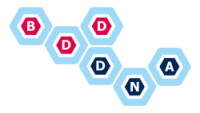Defining Clear Behavior and Requirements
One of the key benefits of BDD is its emphasis on defining clear behavior through scenarios and requirements. When working with multiple parties, including students, it’s essential to establish a shared understanding of the project’s objectives and expected behavior. By collaboratively creating and refining BDD scenarios, all parties can contribute to the definition of software behavior, ensuring alignment and reducing miscommunication during the handover process.
Aligning Expectations
BDD scenarios act as executable specifications that bridge the gap between technical and non-technical stakeholders, including students. By involving students in the creation and validation of scenarios, BDD promotes transparency and aligns expectations. Students gain a valuable learning experience by actively participating in the project, understanding the software’s behavior, and contributing their insights. This active involvement helps build a stronger connection between academia and industry.
Test Automation and Verification
BDD promotes the automation of tests based on the defined scenarios. Automated tests provide a reliable and repeatable method for verifying that the software behaves as expected. By including BDD automated tests in the project, handover becomes more efficient as all parties, including students, can validate the delivered functionality. This hands-on experience with test automation enhances students’ technical skills and understanding of real-world software development practices.
Collaborative Feedback and Iterative Improvements
BDD encourages collaboration and feedback loops among all parties involved, including students. Students can provide valuable input and perspectives based on their fresh insights and knowledge. Throughout the project lifecycle, students, alongside other stakeholders, can contribute ideas and suggest improvements based on their understanding of the software’s behavior. By continuously refining BDD scenarios and incorporating feedback, the project team can deliver a product that meets the expectations of all parties involved, including the educational objectives for students.
Effective Documentation and Knowledge Transfer
BDD scenarios serve as living documentation that captures the desired behavior of the software. As part of the project handover, BDD scenarios provide a clear reference for the customer and students, helping them understand and validate the system’s capabilities. Moreover, BDD scenarios become a valuable knowledge base for students, enabling them to grasp the project’s context and specific requirements. This documentation ensures that the knowledge acquired during the project is effectively transferred to the educational setting.
Conclusion
BDD offers significant advantages when it comes to project handover and collaboration in multi-party projects, including students. By involving students in the process, BDD not only enhances their learning experience but also fosters collaboration, aligns expectations, and promotes a stronger connection between academia and industry. By utilizing BDD to define clear behavior, align expectations, automate tests, and encourage collaboration and feedback, the handover process becomes smoother and more efficient. BDD scenarios serve as executable specifications that enhance communication, enable effective verification, and facilitate knowledge transfer, benefiting all parties involved, including students.
Remember, BDD is not just a testing technique but a collaborative framework that fosters shared understanding and effective communication. By leveraging BDD to enhance project handover and collaboration, you can create valuable opportunities for students to apply their skills, learn from real-world projects, and contribute to the success of multi-party initiatives.


